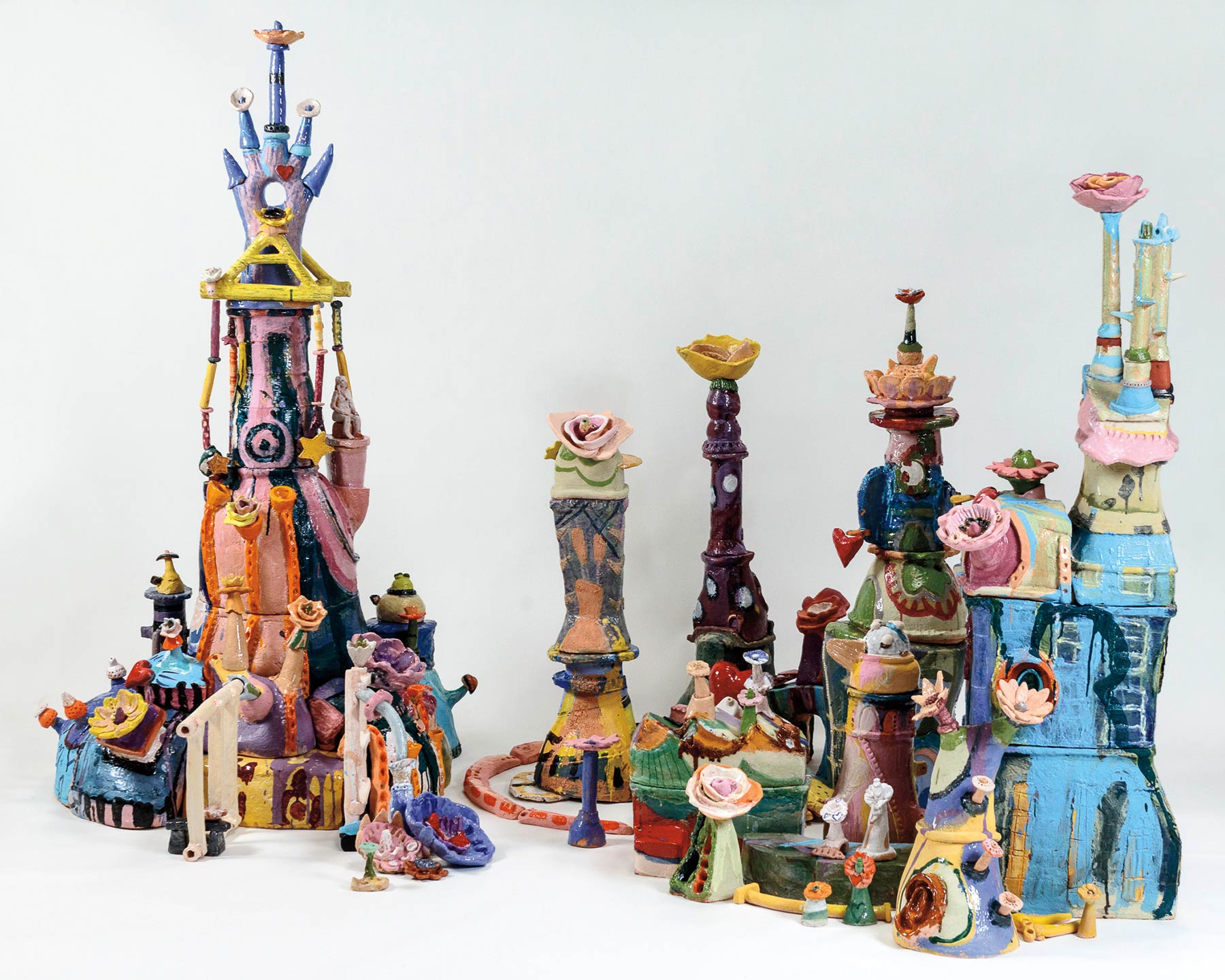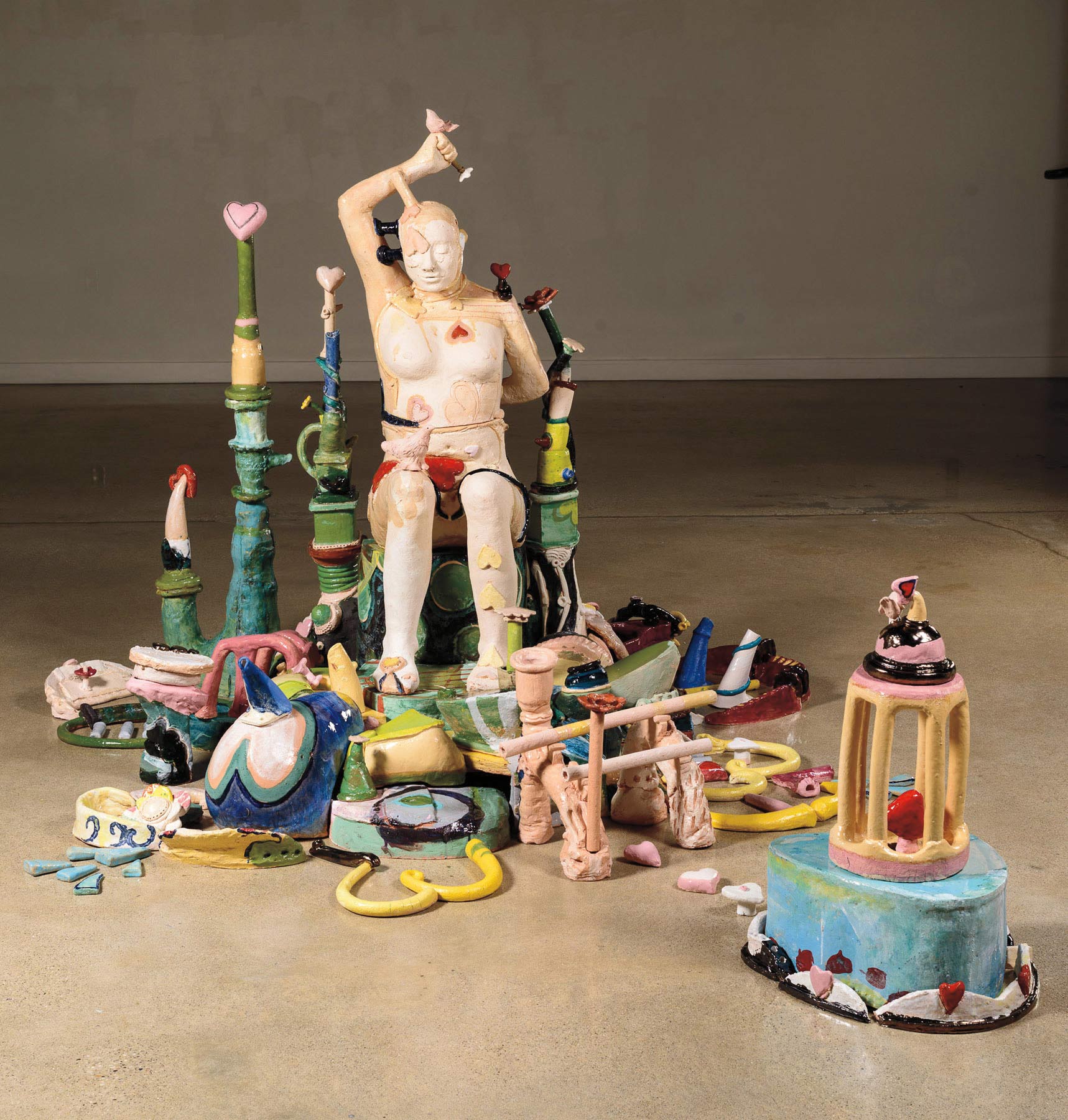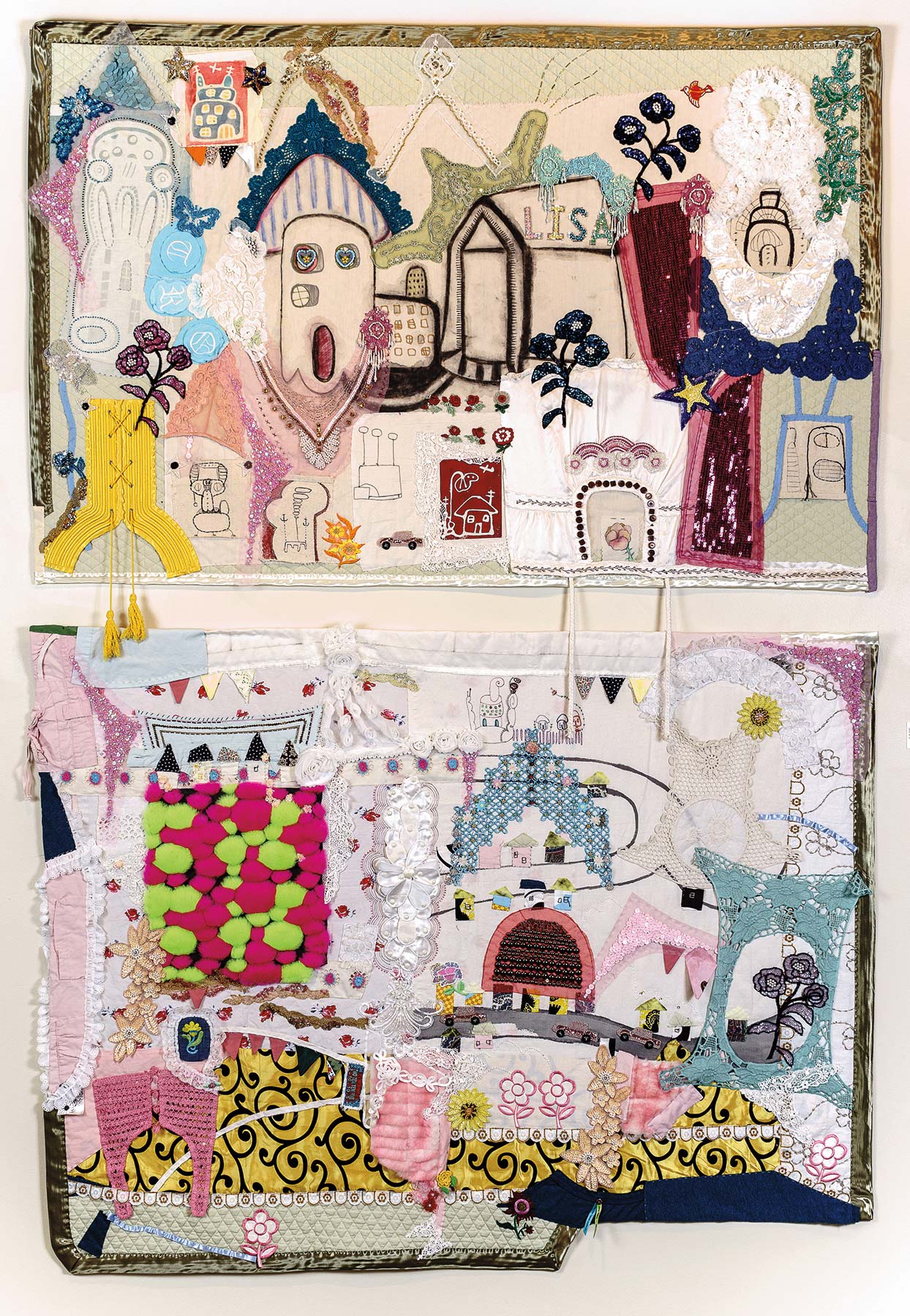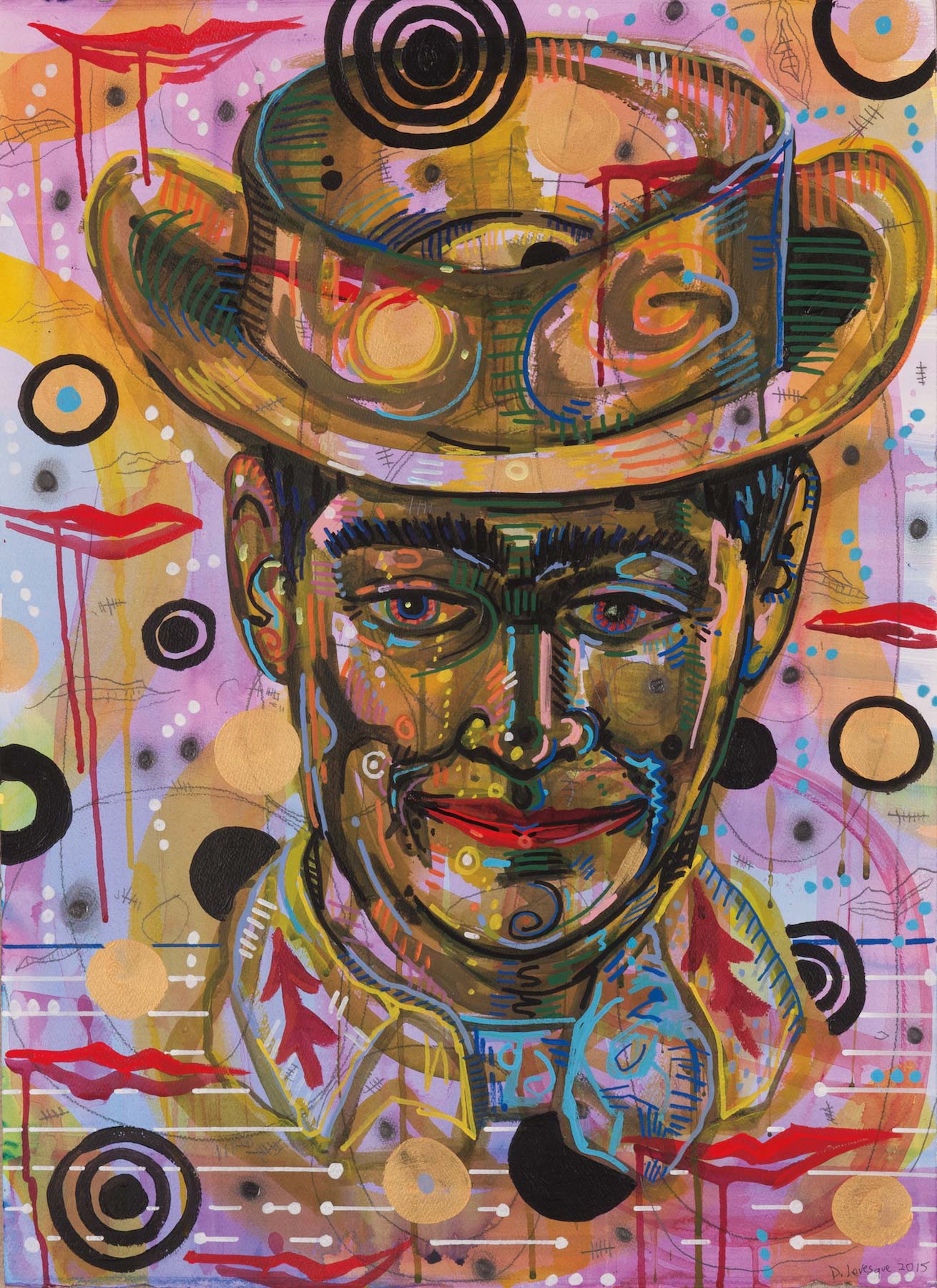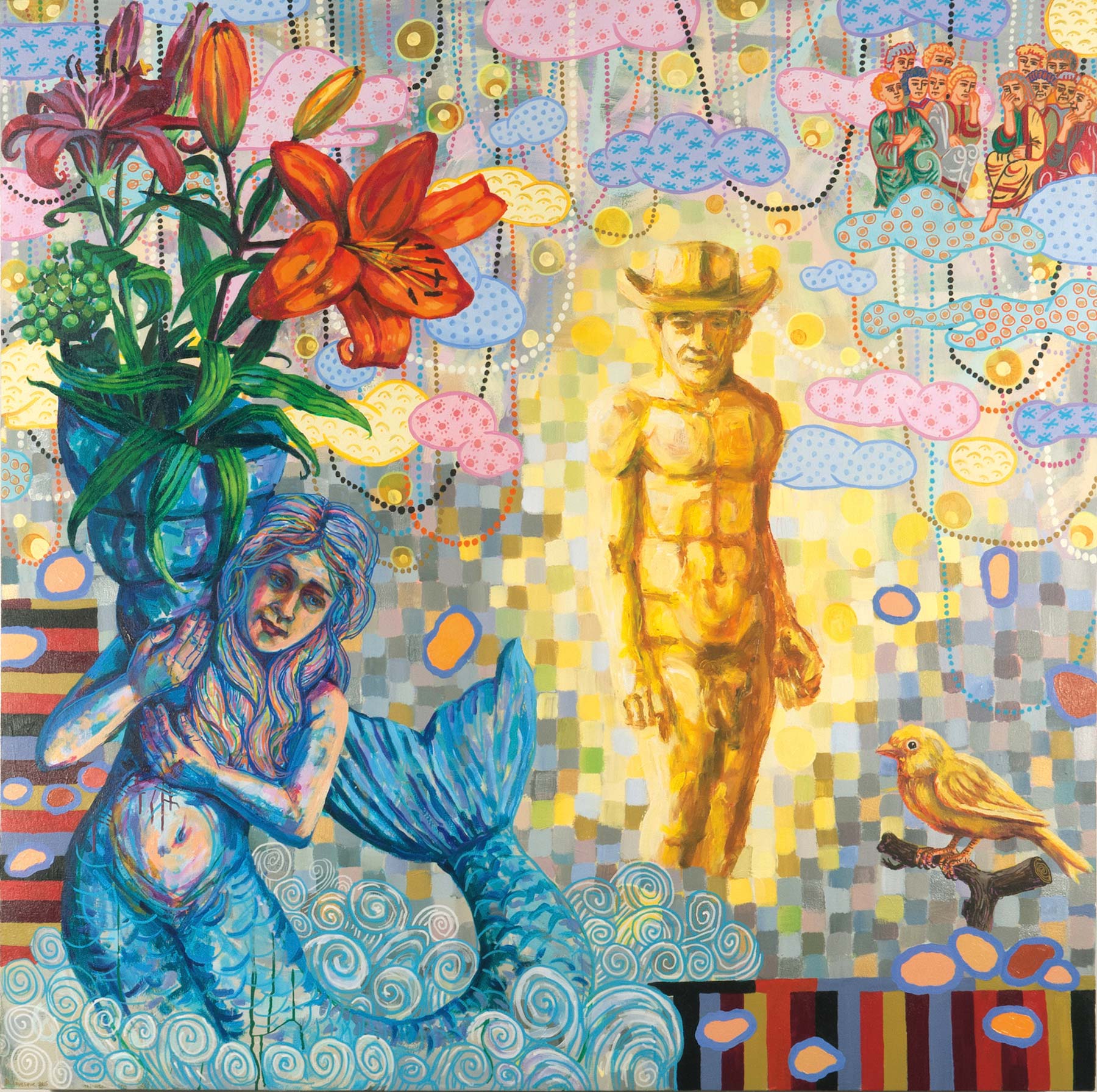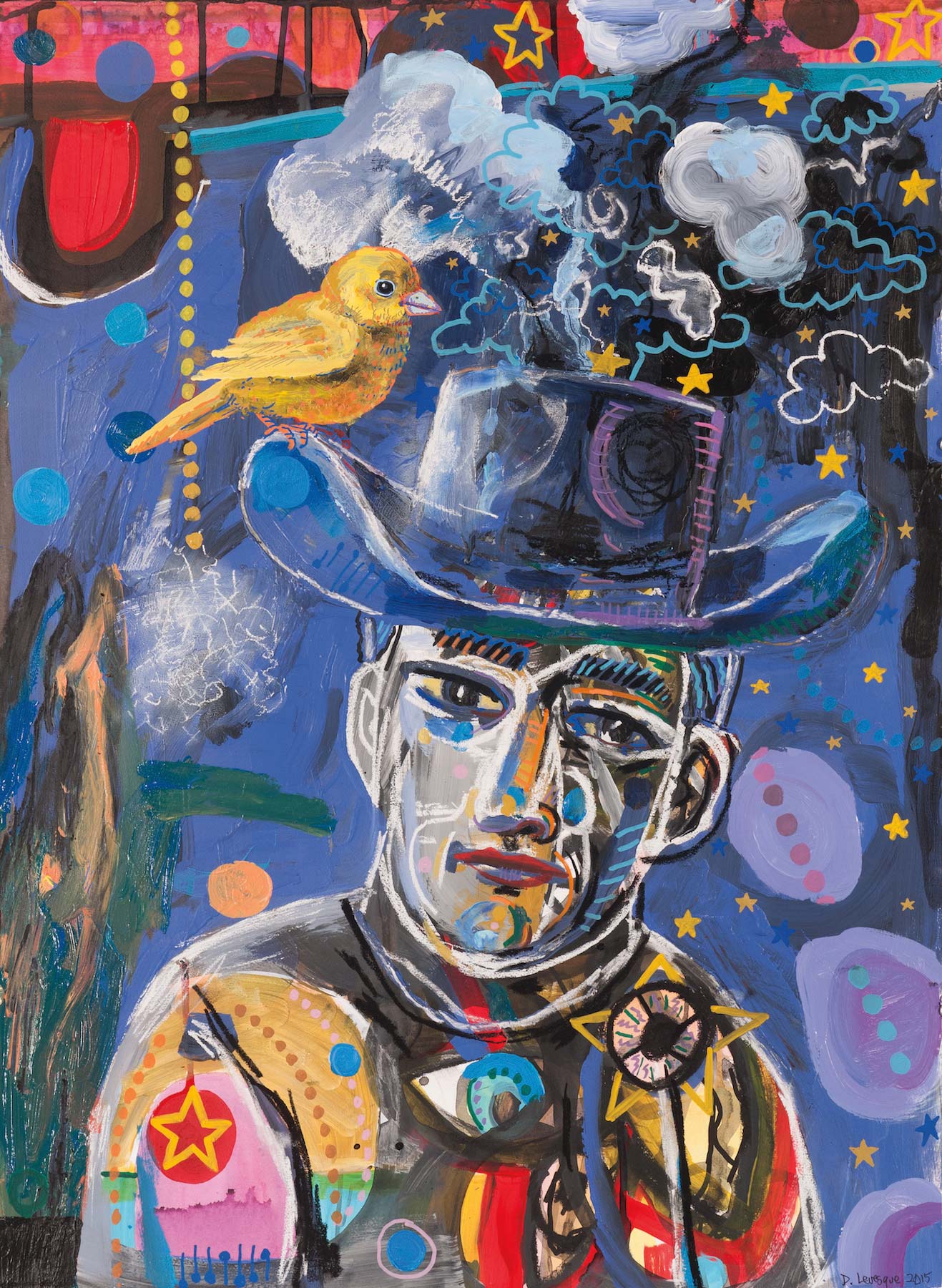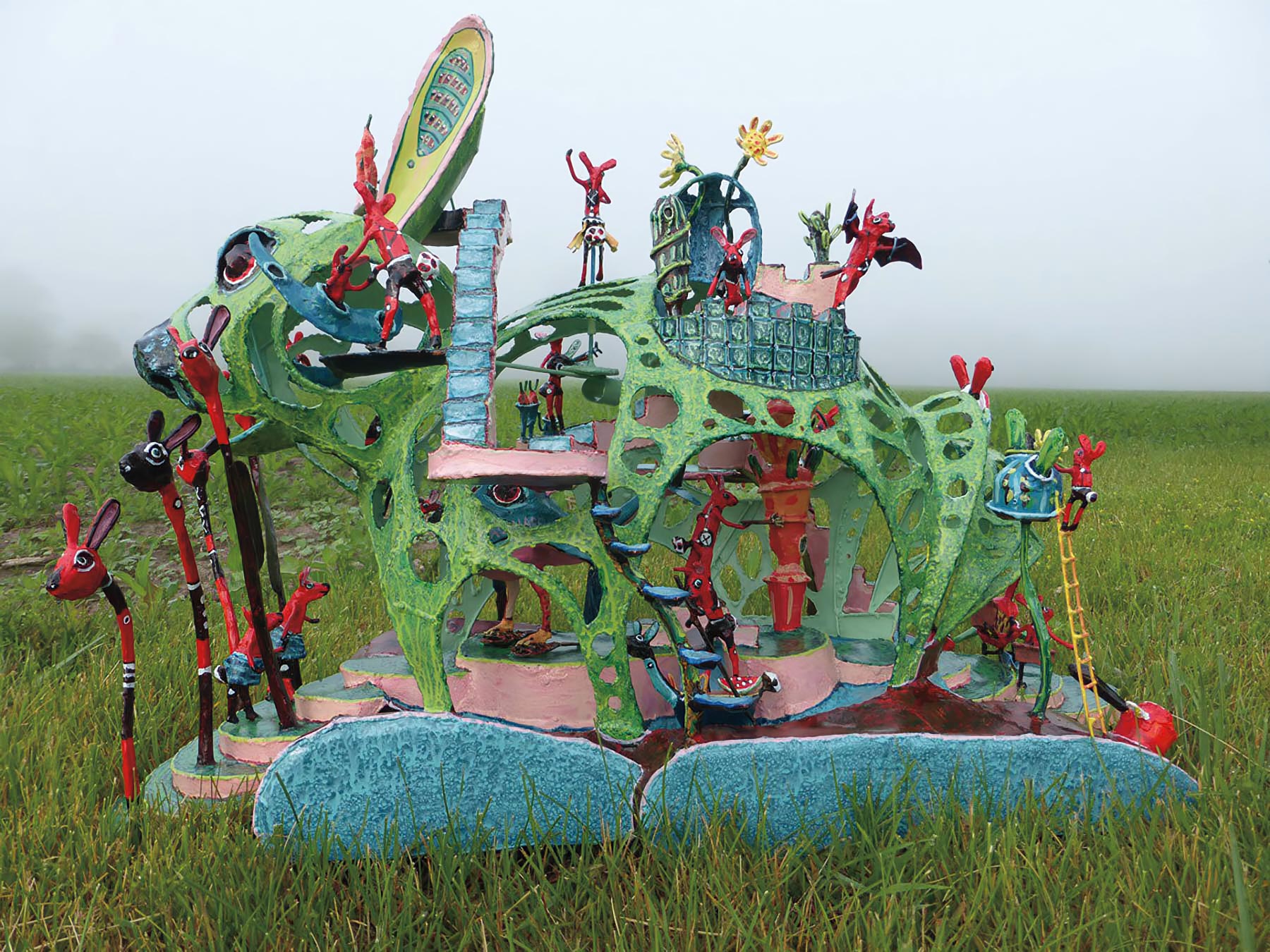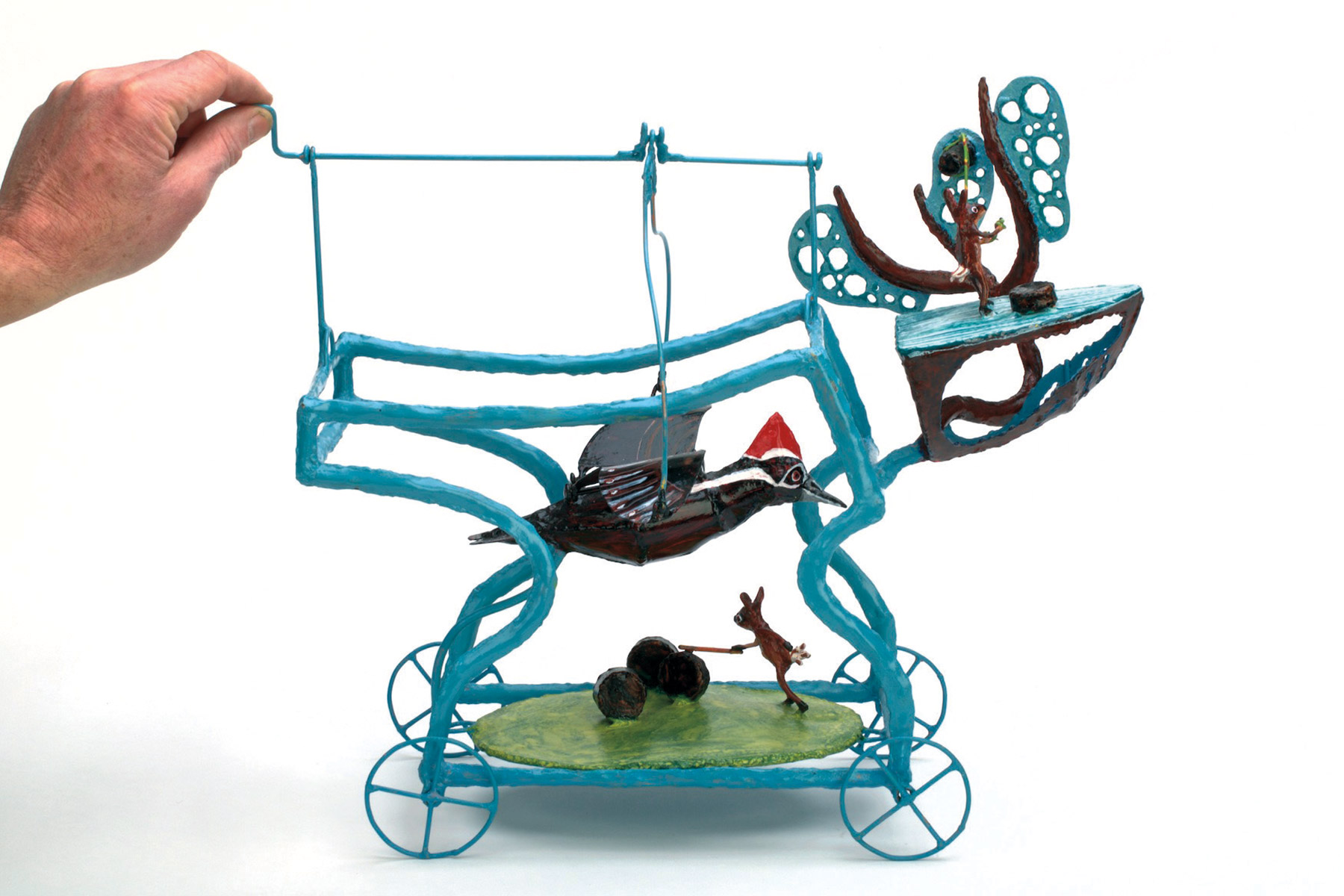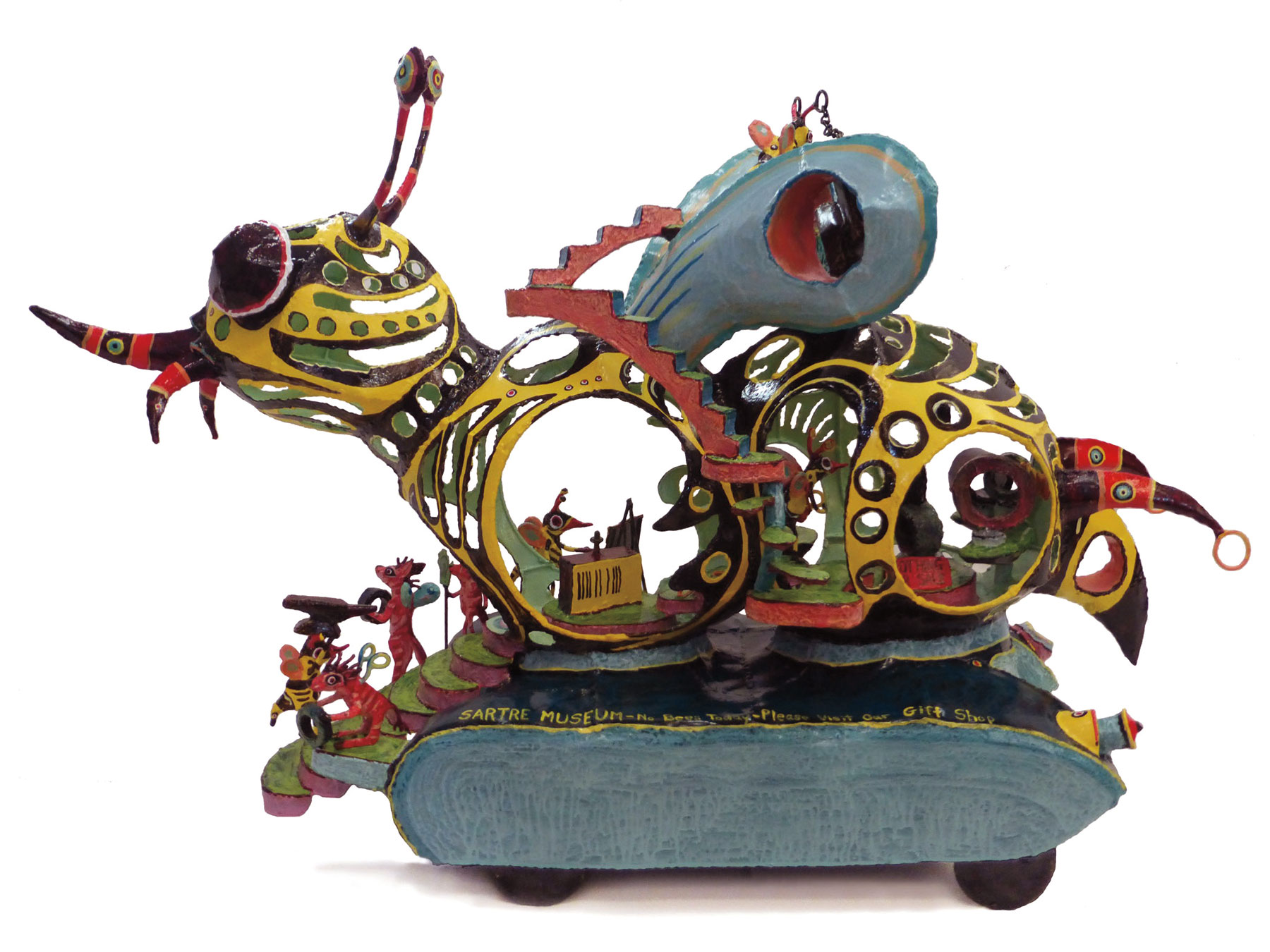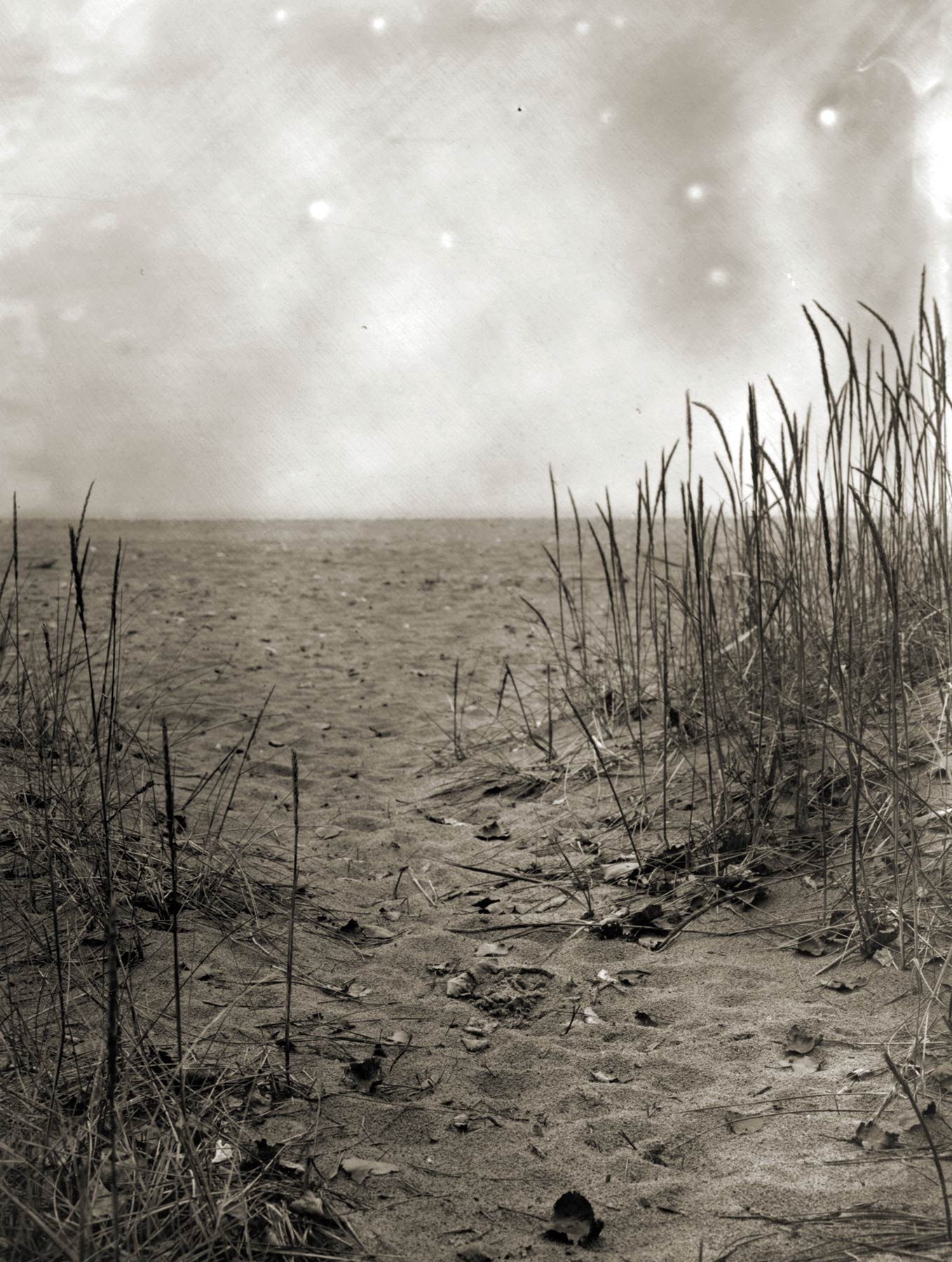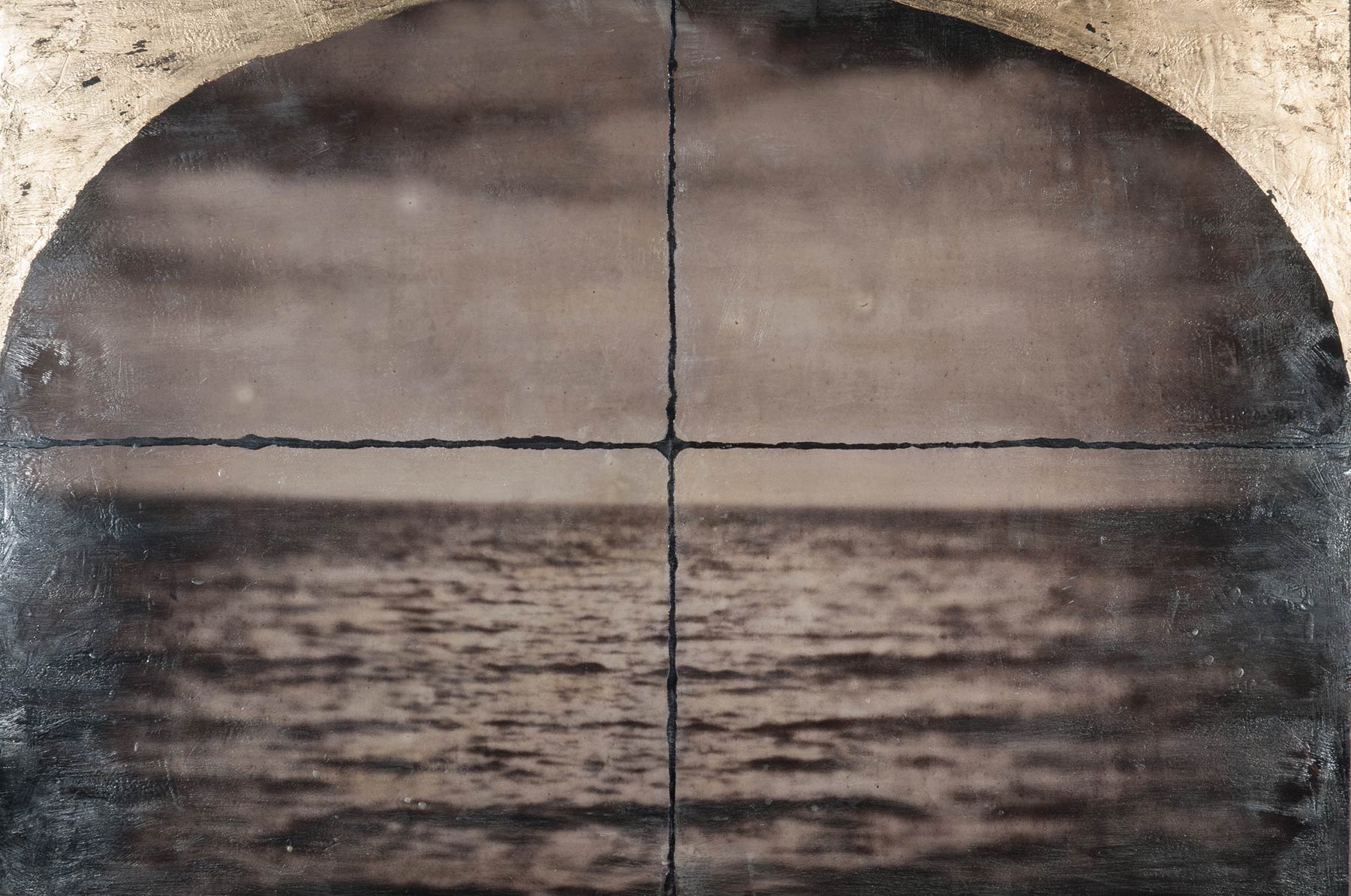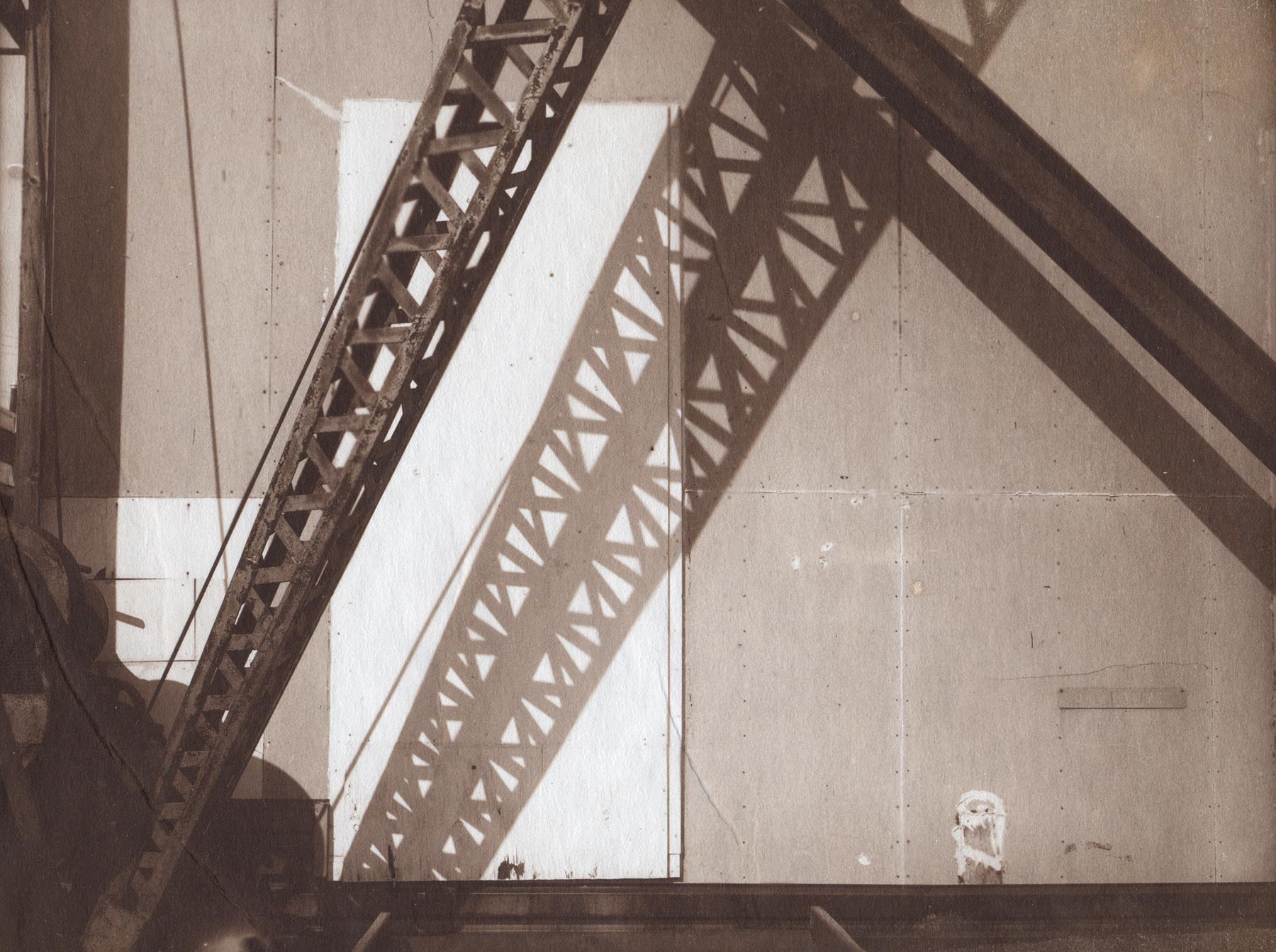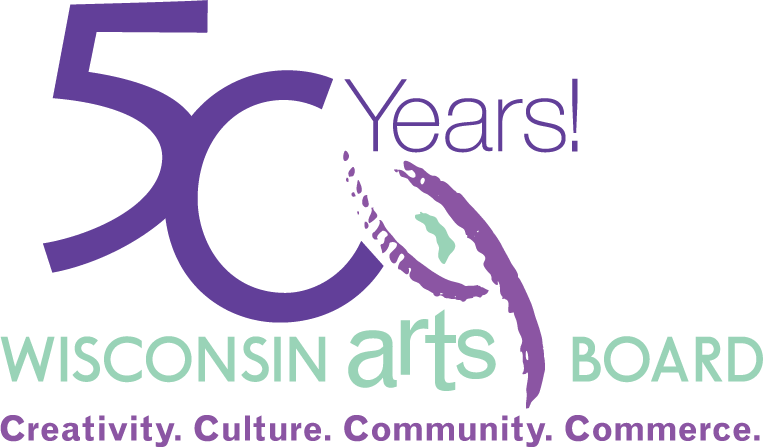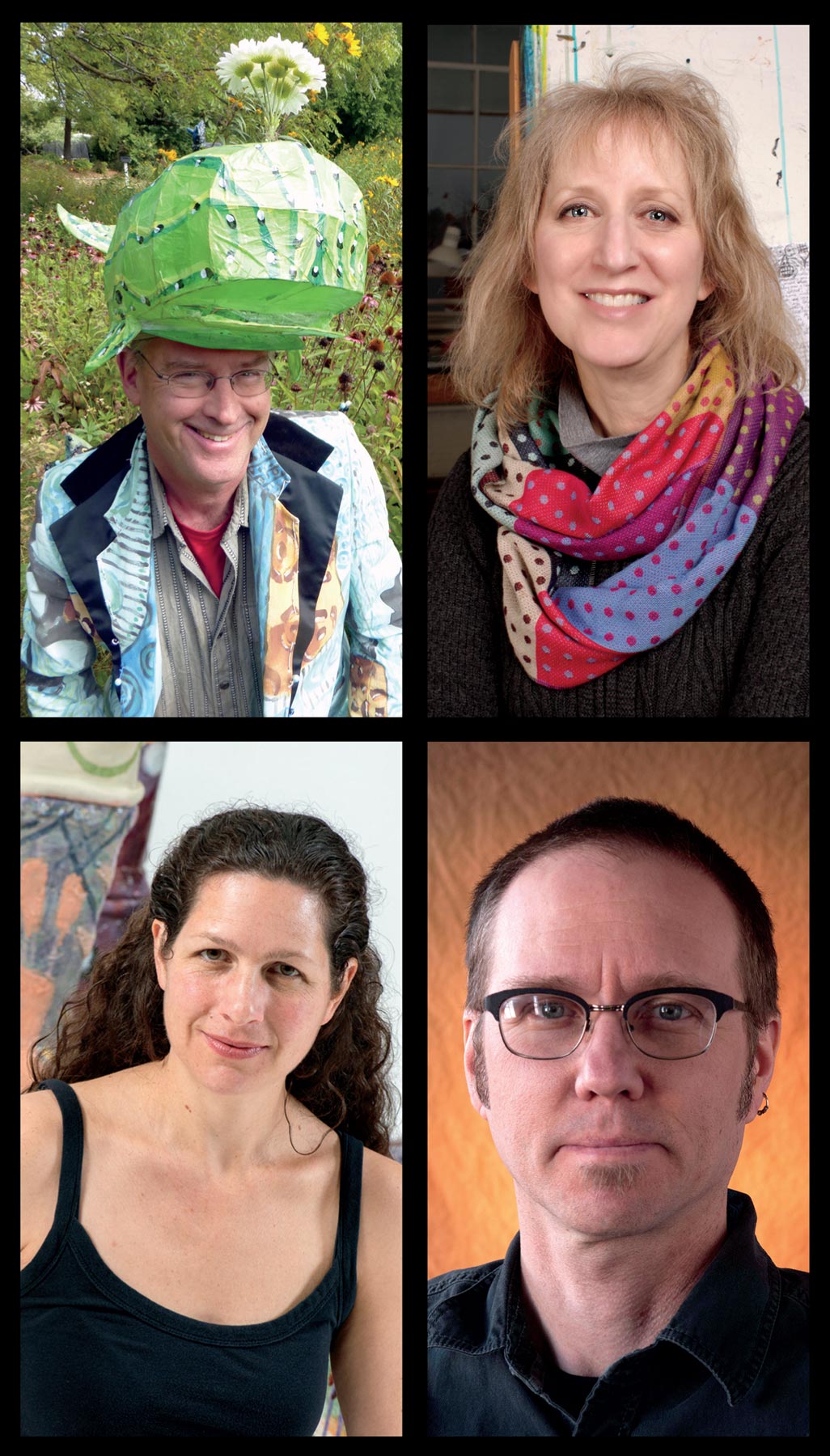
RAM Artist Fellowship Exhibition 2015
August 28 – November 28, 2015
Presented by the Osborne and Scekic Family Foundation
The RAM Artist Fellowship Program aims to showcase the diversity and vitality of the Racine/Kenosha visual arts community by supporting the professional development of its artists. The second biennial exhibition features the work of the following artists:
More About the Exhibition
RAM Artist Fellowship Exhibition 2015
August 28 – November 28, 2015

Presented by the Osborne and Scekic Family Foundation
The RAM Artist Fellowship Program aims to showcase the diversity and vitality of the Racine/Kenosha visual arts community by supporting the professional development of its artists. The second biennial exhibition features the work of the following artists:
More About the Exhibition
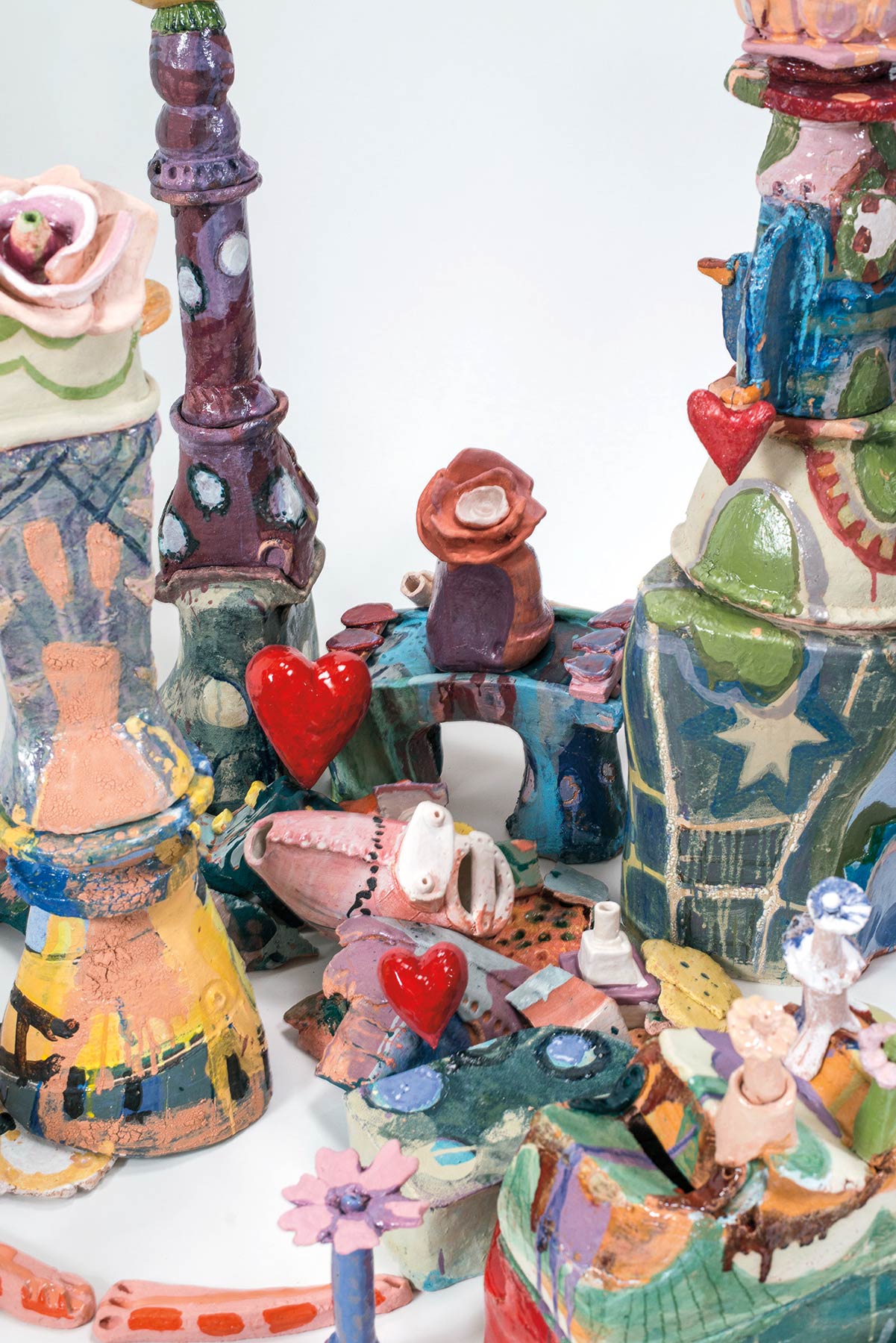
Lisa Marie Barber
Urban Garden (detail), 2015
Glazed recycled ceramic
Courtesy of the Artist
Photography: Courtesy of the Artist
Lisa Marie Barber
Artist Statement
For most of my professional career, I’ve created large-scale ceramic installations where passive figures occupy dense arrangements as if centerpieces to improvised shrines. While my aesthetic and process have stayed the same, I have cropped down the work over the years, making it easier to transport, install, and store—the mundane practicalities most artists have to consider.
These smaller assemblages and all my recent artwork, encompass my imagined, decorative conceptions of home, gardens, peacefulness, playfulness, and celebration. These themes occupy my days either as literal realities or as philosophical musings on what may encapsulate the simpler, yet more evolved life.
My aesthetic sensibility is rooted in Central American Folk Art and the Mexican Catholic shrines of my heritage and upbringing. For most of my childhood in Southern Arizona, this was the artwork I knew and I practiced making creations in similar ways. Whether it was through my novice interpretation or some forgotten informal training I received as a child, I came to believe that ornamentation and excess denoted value and importance. Materials weren’t required to be “fine” and tools were expected to be simple. Evidence of “the hand” (the maker) was never something to be self-conscience of or craftily removed.
Lisa Marie Barber

Lisa Marie Barber
Urban Garden (detail), 2015
Glazed recycled ceramic
Courtesy of the Artist
Photography: Courtesy of the Artist
Artist Statement
For most of my professional career, I’ve created large-scale ceramic installations where passive figures occupy dense arrangements as if centerpieces to improvised shrines. While my aesthetic and process have stayed the same, I have cropped down the work over the years, making it easier to transport, install, and store—the mundane practicalities most artists have to consider.
These smaller assemblages and all my recent artwork, encompass my imagined, decorative conceptions of home, gardens, peacefulness, playfulness, and celebration. These themes occupy my days either as literal realities or as philosophical musings on what may encapsulate the simpler, yet more evolved life.
My aesthetic sensibility is rooted in Central American Folk Art and the Mexican Catholic shrines of my heritage and upbringing. For most of my childhood in Southern Arizona, this was the artwork I knew and I practiced making creations in similar ways. Whether it was through my novice interpretation or some forgotten informal training I received as a child, I came to believe that ornamentation and excess denoted value and importance. Materials weren’t required to be “fine” and tools were expected to be simple. Evidence of “the hand” (the maker) was never something to be self-conscience of or craftily removed.
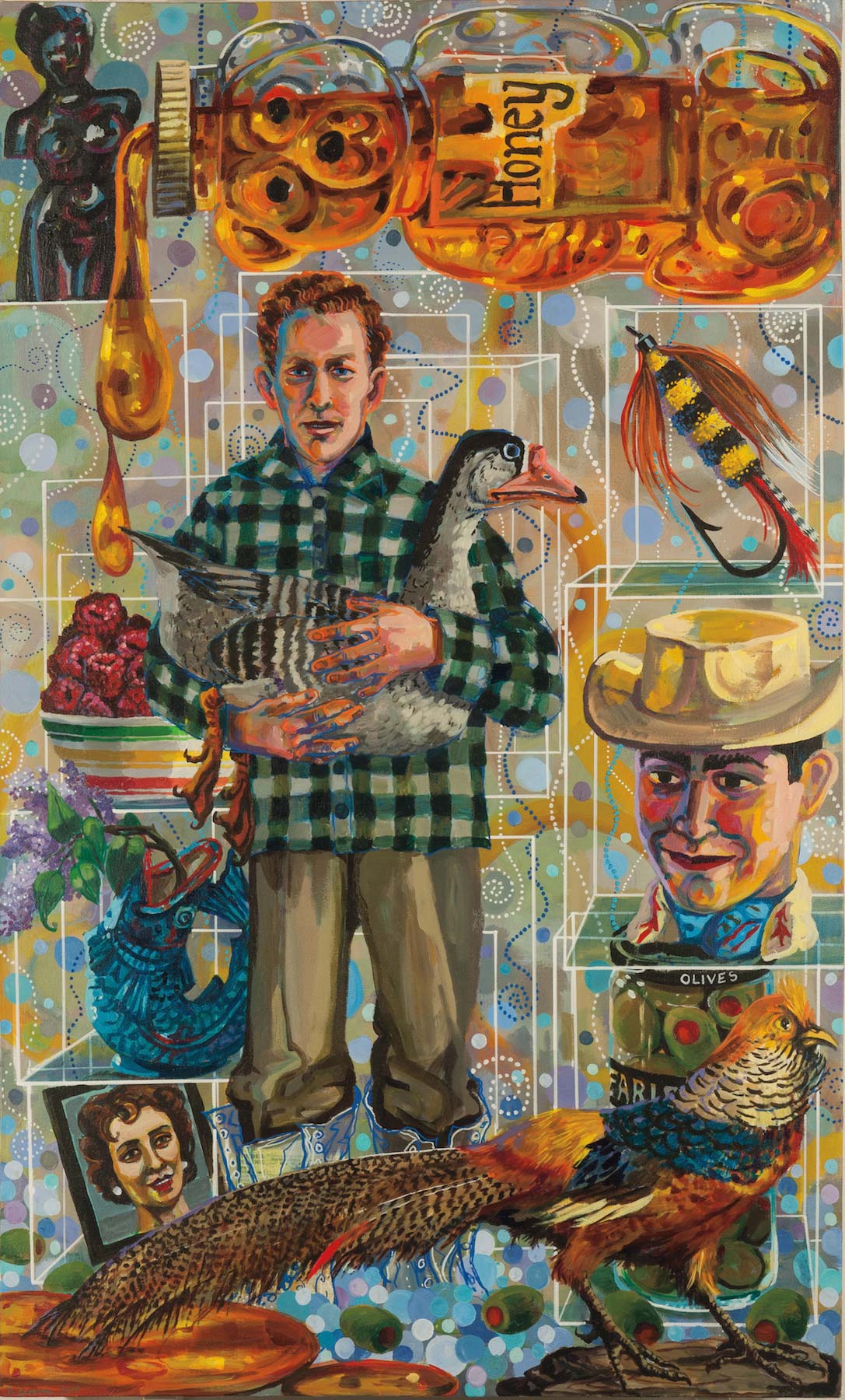
Diane Levesque
Dissolution of His Complexities, 2015
Acrylic on canvas
Courtesy of the Artist
Photography: Courtesy of the Artist
Diane Levesque
Artist Statement
As far as stories go, I have always felt a connection to inanimate objects. Seeming to possess both magical and provocative powers, objects stir up an insatiable and repetitive desire to possess. As a child I watched my father, who practiced the strange art of taxidermy, transform dead animals into the facsimile of the living creatures they had once been. Consequently, the narrative structure in my paintings has evolved through many stages. The objects I depict function as screens for psychological projection. The selection of each object follows the art of memory in which random things trigger associations to arise in the viewer’s mind.
The RAM Artist Fellowship exhibition features part of a body of work titled The Lonely Man Adventures. It begins with a portrait of my father—who passed away in 2013—and explores his identity beyond the archetype of the “father.” One of the objects in this painting is a plastic cup of Roy Rogers, whom my father greatly admired. While working on this painting I became fixated on the Roy Rogers figure as a symbol of “everyman” which I reconfigured into “the lonely man.” The Lonely Man Adventures evolved further into a larger questioning of our mortality, the need for self-awareness, and redemption in the presence of beauty.
Diane Levesque

Diane Levesque
Dissolution of His Complexities, 2015
Acrylic on canvas
Courtesy of the Artist
Photography: Courtesy of the Artist
Artist Statement
As far as stories go, I have always felt a connection to inanimate objects. Seeming to possess both magical and provocative powers, objects stir up an insatiable and repetitive desire to possess. As a child I watched my father, who practiced the strange art of taxidermy, transform dead animals into the facsimile of the living creatures they had once been. Consequently, the narrative structure in my paintings has evolved through many stages. The objects I depict function as screens for psychological projection. The selection of each object follows the art of memory in which random things trigger associations to arise in the viewer’s mind.
The RAM Artist Fellowship exhibition features part of a body of work titled The Lonely Man Adventures. It begins with a portrait of my father—who passed away in 2013—and explores his identity beyond the archetype of the “father.” One of the objects in this painting is a plastic cup of Roy Rogers, whom my father greatly admired. While working on this painting I became fixated on the Roy Rogers figure as a symbol of “everyman” which I reconfigured into “the lonely man.” The Lonely Man Adventures evolved further into a larger questioning of our mortality, the need for self-awareness, and redemption in the presence of beauty.
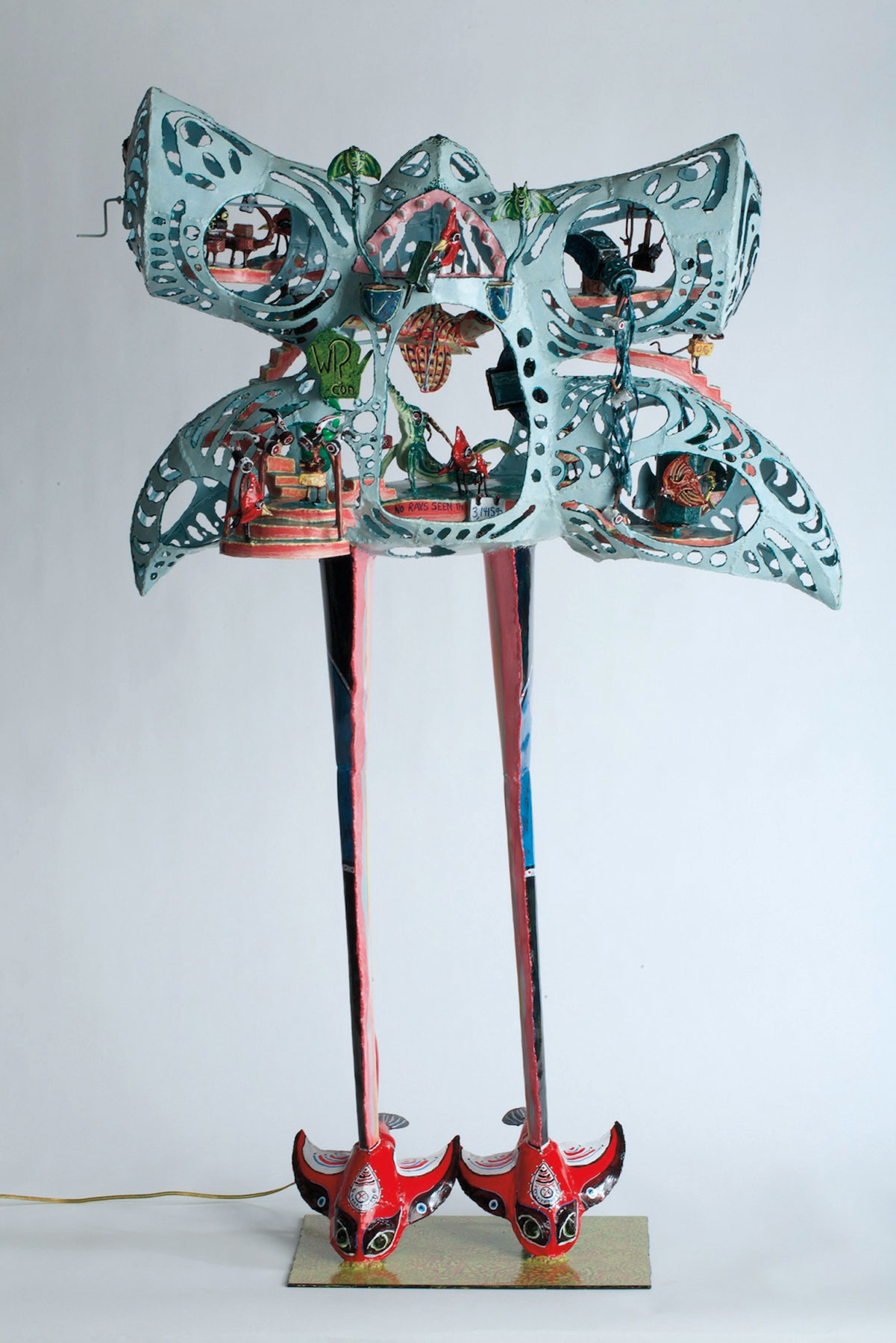
Bill Reid
Museum of Rayscene, 2015
Painted steel
Courtesy of the Artist
Photography: Courtesy of the Artist
Bill Reid
Artist Statement
My process of working is elemental; using only a few hand tools and the heat of an oxyacetylene torch I build my creatures out of thin sheets of metal and steel rods. Even as a young boy, I was drawn to the siren call of fire. Like a detective, I turn on the heat until the steel talks. After construction, the painting process brings the work to life. Painting has become an increasingly important aspect of the work. My sculptures are built around stories and word-play.
Often, the works become moving experiences with the addition of mechanical movement activated by turning wheels or hand cranks. Some beasts become working attendants who can serve you in your bathroom or kitchen and others become messengers of light. My most ambitious work to date is a highway legal vehicle I call the Bee Bomb. Formerly a Ford Escort, I fully reconstructed it into a bumblebee suited convertible.
Like the dodo bird of long ago, I have come to represent things that do not exist. My sculptures require us to erase our perception of what is, and ask ourselves what could Bee?
Bill Reid

Bill Reid
Museum of Rayscene, 2015
Painted steel
Courtesy of the Artist
Photography: Courtesy of the Artist
Artist Statement
My process of working is elemental; using only a few hand tools and the heat of an oxyacetylene torch I build my creatures out of thin sheets of metal and steel rods. Even as a young boy, I was drawn to the siren call of fire. Like a detective, I turn on the heat until the steel talks. After construction, the painting process brings the work to life. Painting has become an increasingly important aspect of the work. My sculptures are built around stories and word-play.
Often, the works become moving experiences with the addition of mechanical movement activated by turning wheels or hand cranks. Some beasts become working attendants who can serve you in your bathroom or kitchen and others become messengers of light. My most ambitious work to date is a highway legal vehicle I call the Bee Bomb. Formerly a Ford Escort, I fully reconstructed it into a bumblebee suited convertible.
Like the dodo bird of long ago, I have come to represent things that do not exist. My sculptures require us to erase our perception of what is, and ask ourselves what could Bee?
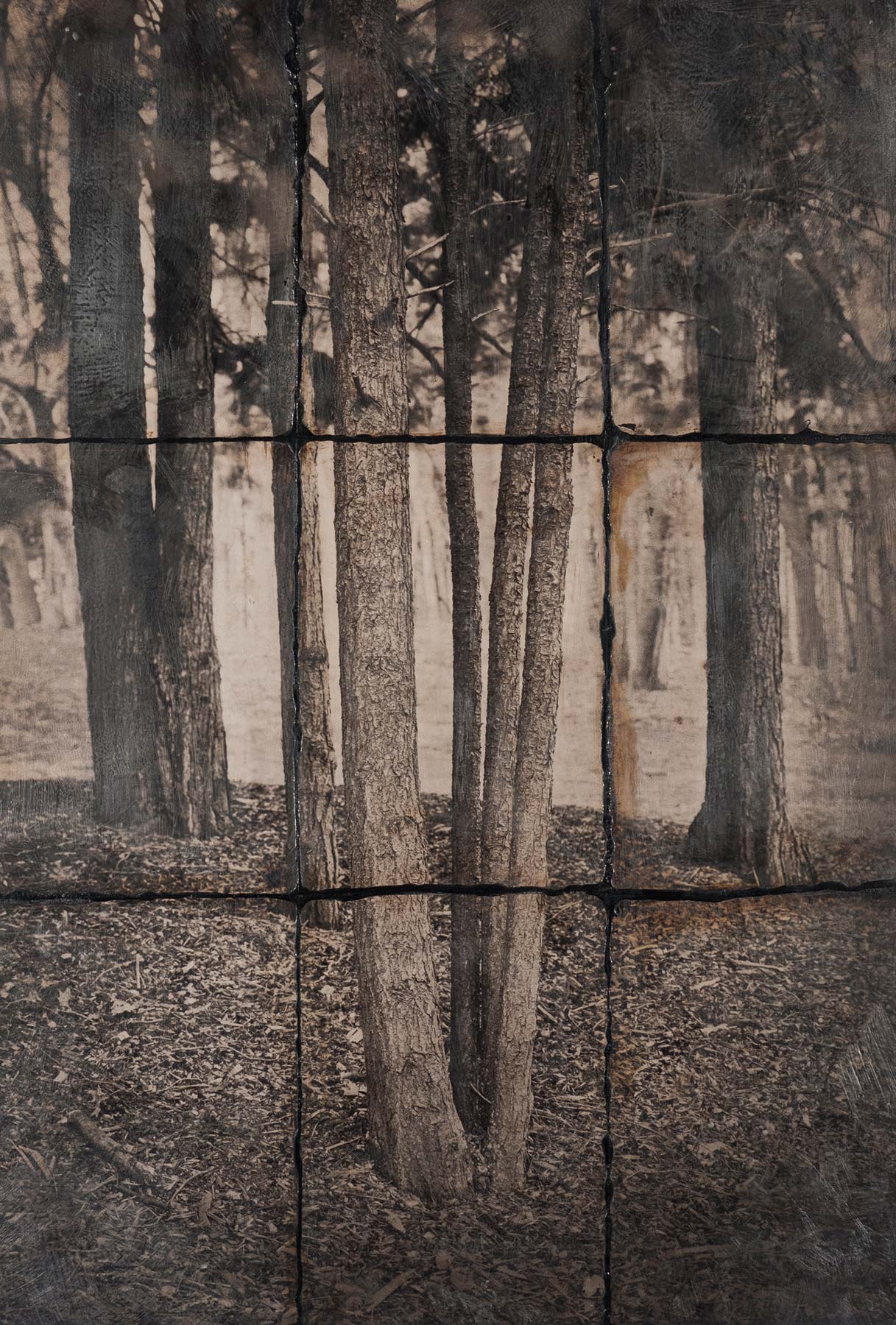
Jim Sincock
Trikaya, 2015
Carbon inket print on panel, beeswax, Damar resin, tar, shellac, and powdered silver pigment
Courtesy of the Artist
Jim Sincock
Artist Statement
My work for the RAM Artist Fellowship Exhibition explores “Quiet Places.” Some of these are physical spaces such as in nature or an empty room. Others are places in one’s mind. Each step of the creative act is like a meditation for me—composing the image, taking the photograph, processing the film or print, and creating the final piece. The process allows me to quiet my mind and find a deeper connection with my subject matter and the final piece.
The techniques used for this work range from historic traditional photographic methods to modern digital methods. I mainly use large format cameras to produce 4 x 5 inch or 8 x 10 inch negatives or tintypes which are then printed as traditional silver-based or modern carbon inkjet prints. Several pieces also use encaustic and mixed media layered over photographic prints. My goal with these pieces is to step beyond the tradition of framed photography and print editions and to create unique one-of-a-kind pieces which blur the lines between photography and painting.
Jim Sincock

Jim Sincock
Trikaya, 2015
Carbon inket print on panel, beeswax, Damar resin, tar, shellac, and powdered silver pigment
Courtesy of the Artist
Artist Statement
My work for the RAM Artist Fellowship Exhibition explores “Quiet Places.” Some of these are physical spaces such as in nature or an empty room. Others are places in one’s mind. Each step of the creative act is like a meditation for me—composing the image, taking the photograph, processing the film or print, and creating the final piece. The process allows me to quiet my mind and find a deeper connection with my subject matter and the final piece.
The techniques used for this work range from historic traditional photographic methods to modern digital methods. I mainly use large format cameras to produce 4 x 5 inch or 8 x 10 inch negatives or tintypes which are then printed as traditional silver-based or modern carbon inkjet prints. Several pieces also use encaustic and mixed media layered over photographic prints. My goal with these pieces is to step beyond the tradition of framed photography and print editions and to create unique one-of-a-kind pieces which blur the lines between photography and painting.
Gallery of Work
Exhibitions at RAM are made possible by:
Platinum Sponsors
The Estate of Karen Johnson Boyd
David Charak
Judith and David Flegel Fund
Ron and Judith Isaacs
Nicholas and Nancy Kurten

Barbara Waldman
Windgate Foundation
Diamond Sponsors
City of Racine’s Grow Racine Grant
Ruffo Family Foundation
Ruth Arts Foundation
Gold Sponsors
Anonymous
Tom and Irene Creecy
Richard and Patricia Ehlert
Osborne and Scekic Family Foundation
Reliance Controls Community Fund
Trio Foundation of St. Louis
W.T. Walker Group, Inc.
Silver Sponsors
Anonymous
Baird
Beta Diagnostic Labs
A.C. Buhler Family
Lucy G. Feller
Ben and Dawn Flegel
Jim Harris
Sharon and Tom Harty
Horizon Retail Construction, Inc.
Johnson Financial Group
Dorothy MacVicar
Jan Serr and John Shannon
Bronze Sponsors
Ellen and Joseph Albrecht
Susan Boland
Dave’s Wine Garage
Educators Credit Union
Express Employment Professionals
Bill and Debbie Keland
Susan Manalli
Jean and Alex Mandli, Jr.
Norbell Foundation
Cathy Stanghellini
Twin Disc


